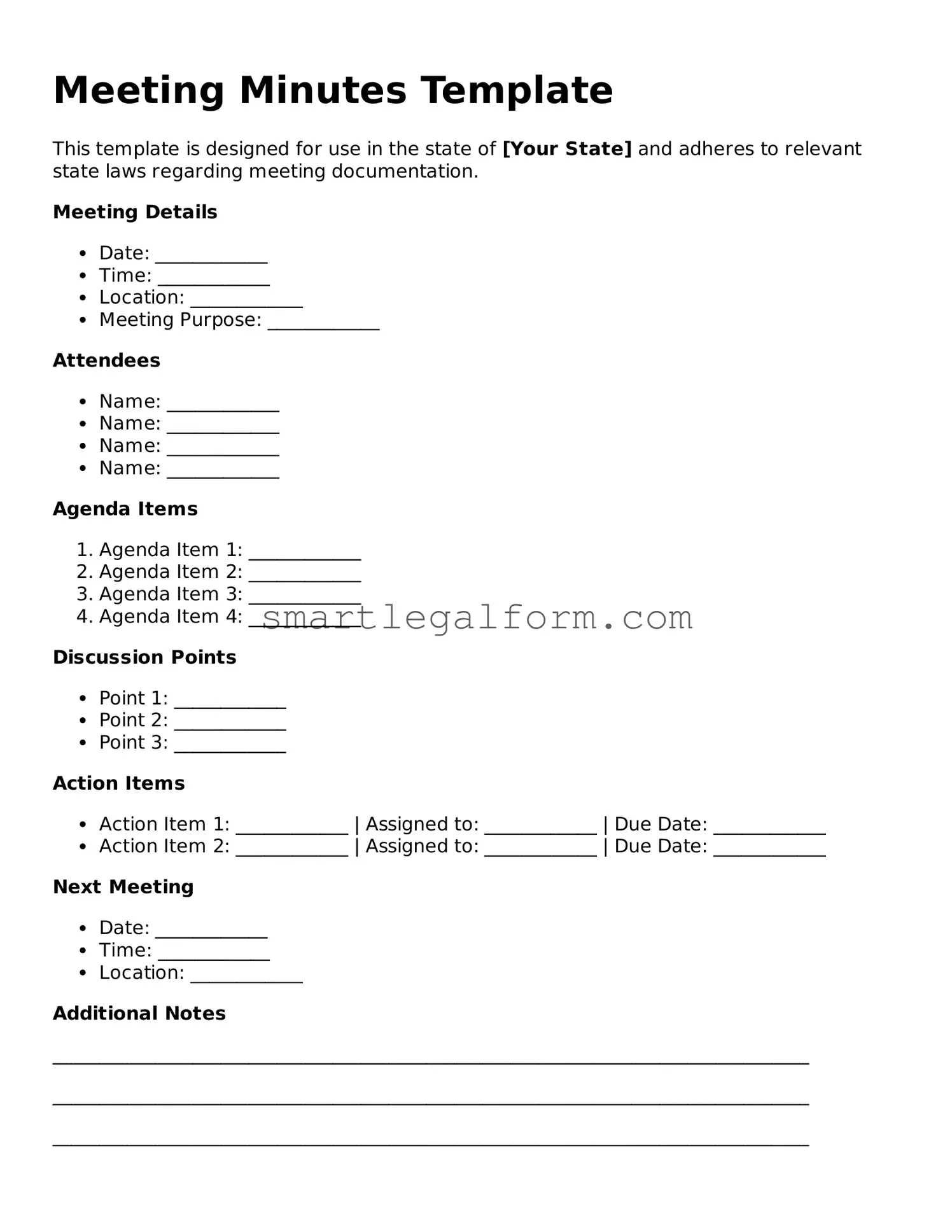Filling out the Meeting Minutes form can seem straightforward, but many people make common mistakes that can lead to confusion or miscommunication. One frequent error is failing to include the date and time of the meeting. Without this information, it becomes difficult to track when decisions were made or actions were agreed upon.
Another mistake is neglecting to list the attendees. Omitting names can create ambiguity about who participated in discussions and who is responsible for follow-up actions. It is essential to have a complete record of all attendees for accountability.
People often forget to summarize discussions accurately. Instead of capturing the essence of what was said, some may write vague statements that do not reflect the actual conversation. Clear and concise summaries help ensure that everyone understands the decisions made.
Additionally, failing to note action items is a common oversight. Each action item should clearly state who is responsible for what and include deadlines. Without this information, tasks may fall through the cracks.
Another mistake is using unclear language or jargon. Meeting minutes should be accessible to all readers. If technical terms or abbreviations are used without explanation, it can lead to misunderstandings.
People sometimes forget to review the minutes before distribution. This step is crucial for catching errors or omissions. A quick review can save time and prevent confusion later.
Not including a follow-up date is also a frequent error. This date serves as a reminder for the next meeting or deadline for action items. It helps keep everyone on track and accountable.
Some individuals make the mistake of being too brief. While conciseness is important, omitting key details can lead to a lack of clarity. Striking a balance between brevity and thoroughness is essential.
Lastly, failing to distribute the minutes in a timely manner can hinder progress. Meeting minutes should be shared promptly to ensure that all participants have the information they need to move forward.
